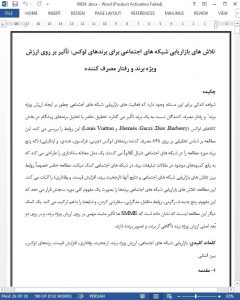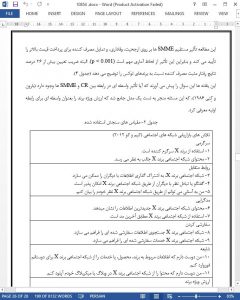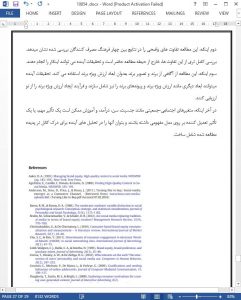Abstract
Scant evidence is available on of how social media marketing activities influence brand equity creation and consumers' behavior towards a brand. This research explores these relationships by analyzing pioneering brands in the luxury sector (Burberry, Dior, Gucci, Hermès, and Louis Vuitton). Based on a survey of 845 luxury brand consumers (Chinese, French, Indian, and Italian), who follow the five brands studied on social media, the study develops a structural equation model that helps to address gaps in prior social media branding literature. Specifically, the study demonstrates the links between social media marketing efforts and their consequences (brand preference, price premium, and loyalty). The study measures brands' social media marketing efforts as a holistic concept that incorporates five aspects (entertainment, interaction, trendiness, customization, and word of mouth). Another contribution of the study is that it finds that SMMEs have a significant positive effect on brand equity and on the two main dimensions of brand equity: brand awareness and brand image.
1. Introduction
The proliferation of social media created a whole new era for companies and brands, forcing them to seek new interactive ways of reaching and engaging their customers (Gallaugher & Ransbotham, 2010; Kozinets, de Valck, Wojnicki, & Wilner, 2010). This quickly expanding marketing channel, which already reaches more than two thirds of all Internet users, provides unparalleled opportunities for brand and reputation building (Correa, Hinsley, & De Zúñiga, 2010; Spillecke & Perrey, 2012). Although social media provide new opportunities and benefits for brand management (Kaplan and Haenlein, 2010), one of the persistent challenges – despite growing scholarly interest – is the difficulty with measuring the impact of social media marketing activities on key brand success measures (Schultz & Block, 2012; Schultz & Peltier, 2013).
6. Limitations and future research
The main limitation of this study is its generalizability beyond the luxury sector. While the results are likely to be useful in the luxury sector, they may not be directly applicable to other industries. The general nature of the findings therefore needs to be confirmed in other contexts.
Second, the study showed clear differences in the results between the four examined consumer cultures. A more thorough investigation of these differences lies outside the scope of this study and is a potential avenue for future research.
Third, the study employed brand awareness and brand image as dimensions of brand equity. Future research could also incorporate other dimensions, such as brand quality and brand associations, and re-evaluate the brand equity creation process.
Last but not least, socio-demographic variables such as gender, age, income, and education, might have a significant influence, or a moderating effect, on the conceptual model and could be included in future analyses for a more thorough understanding of the studied phenomenon.











